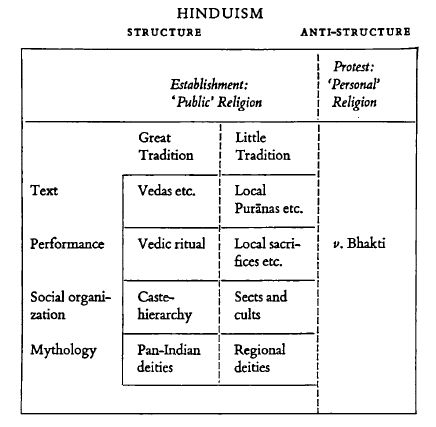Basavanna Life History In Kannada Pdf
Ravi was nice enough to send me a photocopy of a book on Basavanna. Narrative entitled Basavarajadevara ragale composed in Kannada language by Harihara. The sect believes that women are not entitled to final liberation in this birth.
Basavanna (ಬಸವಣ್ಣ) was a 12th-century Hindu philosopher, statesman. Live a principled life. History of Kannada Literature: Readership Lectures. Basavanna (ಬಸವಣ್ಣ) was a 12th-century Lingayat philosopher, statesman, Kannada poet in the Niraakaara (i.e. Formless God) Shiva-focussed Bhakti movement and a social reformer during the reign of the Kalachuri-dynasty king Bijjala I in Karnataka, India.

Human contributions
From professional translators, enterprises, web pages and freely available translation repositories.
Add a translation
Kannada
Kanakadasa Life History In Kannada
Kannada
ಬಸವನದ ಜೀವನ ಚರಿತ್ರೆ
Last Update: 2018-12-19
Usage Frequency: 1
Quality:
Reference:
Kannada
about basavanna
Last Update: 2017-06-20
Usage Frequency: 1
Quality:
Reference:
Kannada
ಜೀವನದ ಇತಿಹಾಸ ಕನ್ನಡದಲ್ಲಿ ಬಸವಣ್ಣ
Last Update: 2017-02-06
Usage Frequency: 1
Quality:
Reference:
Kannada
ಜೀವನ ಇತಿಹಾಸ ಕನ್ನಡದಲ್ಲಿ ಬುದ್ಧನ
Last Update: 2017-06-11
Usage Frequency: 1
Quality:
Reference:
Kannada

ಇತಿಹಾಸ ಕನ್ನಡ ಕ್ರಿಕೆಟ್
Last Update: 2016-12-16
Usage Frequency: 1
Quality:
Reference:
Kannada
ಕನ್ನಡದಲ್ಲಿ ಕನಕದಾಸರ ಜೀವನ ಚರಿತ್ರೆ
Last Update: 2015-11-27
Usage Frequency: 1
Quality:
Reference:
Kannada
kannada
Last Update: 2015-11-14
Usage Frequency: 1
Quality:
Reference:
Kannada
ವಾಲ್ಮೀಕಿ ಜೀವನ ಚರಿತ್ರೆ ಕನ್ನಡ
Last Update: 2018-10-19
Usage Frequency: 1
Quality:
Reference:
Kannada
ಕನ್ನಡದಲ್ಲಿ ಕನಕದಾಸರ ಜೀವನ ಚರಿತ್ರೆ
Last Update: 2017-07-03
Usage Frequency: 1
Quality:
Reference:
Kannada
ಕನ್ನಡದಲ್ಲಿ ಅಬ್ದುಲ್ ಕಲಾಂ ಜೀವನದ ಇತಿಹಾಸ
Last Update: 2016-10-21
Usage Frequency: 1
Quality:
Reference:
Kannada
Kannada
Last Update: 2019-01-29
Usage Frequency: 1
Quality:
Reference:
Kannada
ಕನ್ನಡದಲ್ಲಿ ಬಸವಣ್ಣ ಮೇಲೆ ಪ್ರಬಂಧ
Last Update: 2018-04-17
Usage Frequency: 10
Quality:
Reference:
Kannada
ಹಿಂದಿಯಲ್ಲಿ ಬಸವಣ್ಣ ಮೇಲೆ ಪ್ರಬಂಧ
Last Update: 2015-01-01
Usage Frequency: 1
Quality:
Reference:
Kannada
ಕನ್ನಡ ಮನೋಜ್ ಕುಮಾರ್ ಪಾಂಡೆ ಜೀವನ ಇತಿಹಾಸ
Last Update: 2016-12-30
Usage Frequency: 1
Quality:
Reference:
Kannada
ಇತಿಹಾಸ ಕನ್ನಡ ಕ್ರಿಕೆಟ್
Last Update: 2017-08-08
Usage Frequency: 1
Quality:
Reference:
Kannada
ಕನ್ನಡದಲ್ಲಿ ಬಸವಣ್ಣ ಮೇಲೆ ಪ್ರಬಂಧ
Last Update: 2017-03-03
Usage Frequency: 1
Quality:
Reference:
Kannada
ಯೋಗದ ಇತಿಹಾಸ
Last Update: 2017-03-11
Usage Frequency: 1
Quality:
Reference:
Rashtrakavi Kuvempu Life History In Kannada
Kannada
ಬಸವಣ್ಣ ಕವಿ
Last Update: 2016-12-13
Usage Frequency: 1
Quality:
Reference:
Kannada
ಪುರಂದರದಾಸ ಜೀವನ ಚರಿತ್ರೆ
Last Update: 2019-01-08
Usage Frequency: 1
Quality:
Reference:
Kannada
ಚೈತನ್ಯ ಇತಿಹಾಸ
Last Update: 2018-08-18
Usage Frequency: 1
Quality:
Reference: